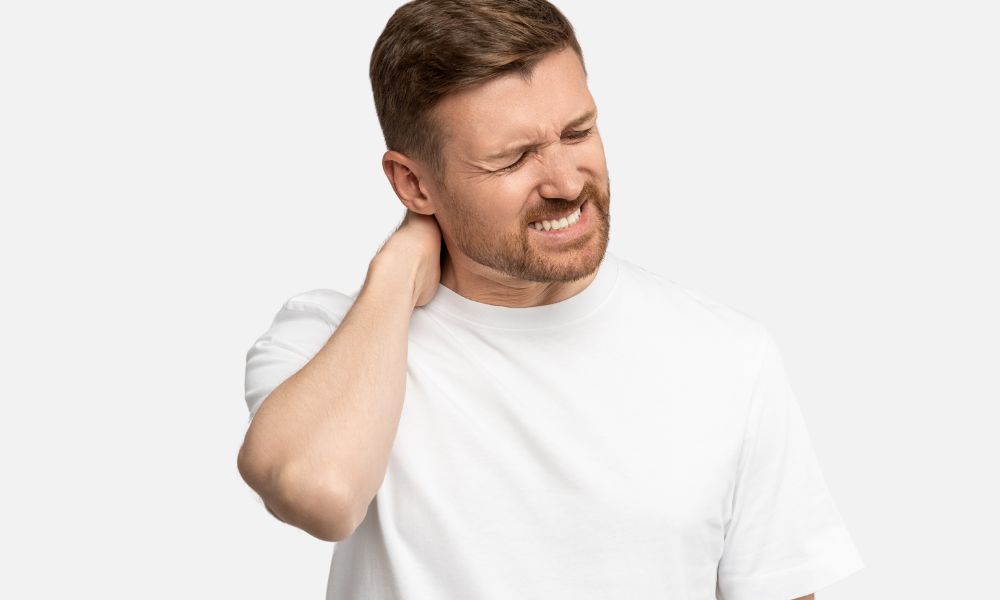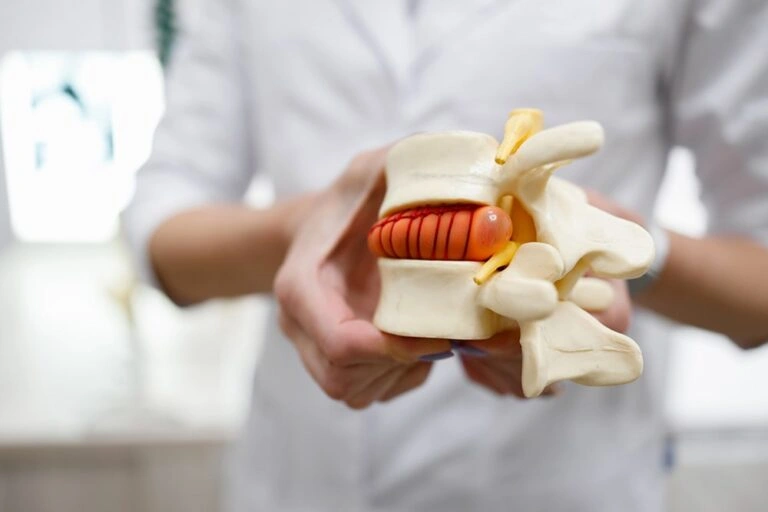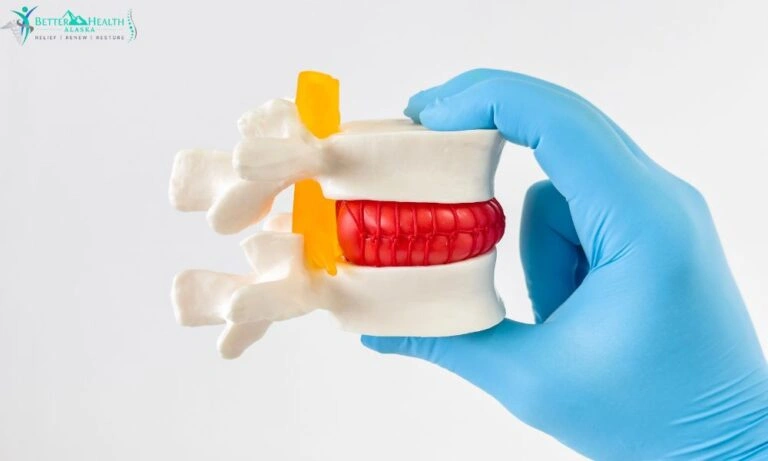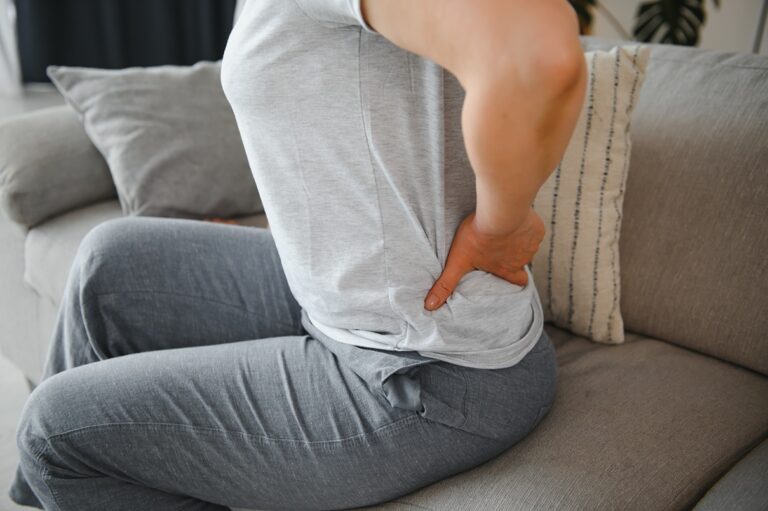Cervical radiculopathy, a condition that is often referred to as a pinched nerve, results when a nerve in the neck is compressed by inflammation, a herniated disc, or some other musculoskeletal condition. When present, its symptoms can range from pain to numbness or even worse.
It’s called “radiculopathy” because the pain, or other symptoms, radiate along the length of the nerve and can affect other parts of the body. In other words, the pinch in the neck can lead to pain, weakness, or what-have-you in the arm, hand, or even fingers.
If you have cervical radiculopathy, though, you are not simply at its mercy. There are certain self-measures you can take to alleviate your condition. The first thing is, of course, to seek out medical advice like a chiropractor. A trained medical professional is well-suited to guide you through your recovery.
Beyond that, we present the following list of self-care options you can implement to assist you in your recovery. These include:
- Rest
- Heat/Cold Therapy
- Remain Active
- Relax Regularly
- Do Not Smoke
- Over the Counter Medications
- Physical Therapy Exercises
There are two parts to Cervical Radiculopathy Self-Care. The things you should do. And the things you should not do.
What Should You Do If You Have Cervical Radiculopathy
Rest
Resting for the first one or two days may be beneficial because it will allow the muscles in the neck to relax and loosen. This may serve to reduce some of the symptoms like the pain caused by inflammation or tight muscles. However, you are advised to not rest more than this. Doing so may lead to atrophy in the neck muscles and overall worsening of symptoms.
Hot/Cold Therapy
Another simple self-care measure is the judicious use of hot packs and ice packs. Most people are familiar with such from their use in high school sports and other activities. They work here, with the neck, too! You are advised to start with a day or two of ice therapy alone. Then, add in heat therapy, but alternate between the two. Ice therapy serves to reduce inflammation which, in many cases, will serve to reduce the pain. On the other hand, heat therapy serves to increase blood flow which aids in healing. Used together, they pack a one-two punch.
Remain Active
This was mentioned in the entry on “Rest.” You want to remain reasonably active during recovery. It may be difficult to do while suffering from pain, but failure to do so may make matters worse. Doing simple gentle exercises like Tai Chi or even just walking around a block or two on a regular basis should help keep your cervical spine from stiffening and getting worse.
Relax Regularly
To clarify, you don’t over do your activities. It’s good to get some relaxation in. This can be simple things like meditation or controlled breathing exercises, or practicing mindfulness. None of these are difficult, and each one can help you relax and unwind.
Do Not Smoke
Smoking, in general, is bad for your health across the board. In this particular context, though, smoking can lead to an increase in the sensitivity of your nerves. This, in turn, can lead to a worsening of pain symptoms.This happens because smoking reduces your pain threshold. Lower pain threshold means greater pain resulting from similar symptoms.
Over the Counter Pain Medications
Over-the-Counter (OTC) pain medications are useful because they help manage your pain. They will help you bear with the issue while your body addresses it through its own resources, and perhaps even gets help from other measures you take. Basically, the OTC meds can relieve the pain and reduce inflammation thereby giving you time to heal and recover. Common such pain medications include NSAIDS (nonsteroidal anti-inflammatory medications) like ibuprofen which reduce inflammation and lower pain.
Exercise/Physical Therapy
Another potent self-care weapon for treating cervical radiculopathy is exercise. Although many exercises can be done on their own, if you are exercising for medical reasons, you should be doing so under the guidance of a medical professional like a physical therapist, chiropractor, or general practitioner.
In any event, exercise and stretching can strengthen weak muscles and increase their flexibility. This can lower pain and improve posture which may also serve to address the root cause of the problem (herniated disc, spinal misalignment, etc…). All told, there are a vast number of exercises that can assist an individual with cervical radiculopathy. To better understand your condition, you might want to know how to test for cervical radiculopathy. What follows is a fair sampling, but an incomplete list, of exercises you can do:
The Chin Tuck
The chin tuck serves to work the muscles in your neck and potentially relieve pressure on some of the corresponding nerves.
- Sit in a sturdy chair and stay upright
- Looking forward, slide your head back along a horizontal line.
- Hold for several seconds, then relax.
- Repeat.
Cervical Traction
This common exercise also works the neck muscles. This, in turn, helps you maintain neck posture and potentially alleviate some misaligned pressures.
- Lie on a bed, facing upward and with head just over the edge.
- Carefully, lower head so that it hangs down, stretching the neck.
- Hold and repeat, if desired.
Nerve Glides
Nerve glides (also known as neural flossing) involve a method specifically designed to relieve tension in nerves.
- Mind your posture while standing.
- Extend one arm to one side, palm facing upward.
- Point fingers downward (away) and also bend your neck away.
- Briefly hold and repeat as needed.
Neck Extensions
Neck extensions are a type of exercise designed to help improve range of motion in the neck, as well as build strength in particular muscles therein and improve the head’s forward posture.
- Sit upright in a sturdy chair.
- Lift your head and look up at the ceiling.
- Hold. Relax. Repeat as desired.
Side Tilts
Another great neck exercise is side tilts. These movements are useful in cases involving stenosis issues or arthritis. They are excellent for improving range of motion.
- Sit upright in a chair.
- Tilt your head to one side as if trying to touch your ear to your shoulder.
- Hold.
- Return to start.
- Repeat on the other side.
Isometric Holds
Isometric Holds are exercises based on the concept of resistance. Basically, you use one hand to hold your head and neck in place, while at the same time pushing against your hand with your head or neck as required.
Side to SideTurning (Rotating)
This is another exercise designed with range of motion in mind.
- Sit in a chair with good posture.
- Turn your head as far as possible to one side.
- Hold.
- Return to start.
- Alternate and repeat as desired.
Shoulder Retractions
As mentioned previously, muscular balance and posture can often be associated with neck pain. Fortunately, shoulder retractions can be used to combat those problems in the area of the upper back
- Sit upright in a chair.
- Draw back your shoulders and squeeze them together.
- Hold.
- Relax.
- Repeat.

What Should You Not Do With Cervical Radiculopathy
Straining the muscles in your neck or in the regions around your neck or your upper body (shoulders, etc…) is ill-advised, if you have cervical radiculopathy. So, as you work toward relief, try to avoid exercises that put too much strain on those areas. Things to avoid include:
- Weightlifting – avoid shrugs and other exercises that may over work your traps.
- Yoga – Avoid headstands or other yoga positions that focus weight on your head and neck.
- Ignoring pain – if any exercise or activity you are performing (like those listed above or found elsewhere) causes you pain, you should cease that activity immediately, and seek out a professional medical opinion.
Cervical Radiculopathy Recovery Time
Like most other ailments, individual recovery time varies for a variety of different reasons. Factors that can influence recovery time include age, physical fitness, severity of the condition, and methods employed to relieve it.
Having said that, though, the usual amount of time cited ranges from four to six weeks. In more difficult situations, it may, perhaps, take as long as eight weeks. Or, in more ideal situations, as few as three weeks, if not even less. If you find that the issue is not resolving as you would like or would expect, you should consult a medical professional.
Science
Although cervical radiculopathy is well-studied and fairly well-understood, it still offers surprises to the medical community here and there. Consider the following:
A study in the Indian Journal of Health Sciences and Biomedical Research KLEU found that females have more disability in cervical radiculopathy as compared to males.
Another study, this one from the European Spine Journal on Springer Link, found “that sleep disturbance was closely related to the female gender,” as well as a number of other factors
Another study in the Indian Journal of Pain found “a prevalence of 50%” among IT professionals. Yet, the same study found a prevalence in males versus females – which is in direct contradiction of the previous two studies we’ve cited above.
Taken all together these three studies indicate that cervical radiculopathy and the study thereof involves an intricate interplay of myriad factors that are sometimes difficult to effectively manage.
Clearly, more analysis is needed here. In the first study, disability was the factor associated with cervical radiculopathy and gender; in the second, sleep disturbance; and in the third, having a technical IT job. All different factors. What other interplay is involved here? More study and time will surely determine that.
Conclusion
Ultimately, though, cervical radiculopathy is manageable. Also, it is more readily resolved the sooner you treat it. So, if you find yourself going through these exercises and self-care activities, you need to pay close attention to how your body responds. Seeking out help is better sooner rather than later. Here at Better Health Alaska in Anchorage, we have been dealing with cervical radiculopathy for over twenty years. We have physical therapists, chiropractors, and nurse practitioners on our staff who can help you with your problems. So reach out. Give us a call, and make an appointment. We’ll get you back in shape.









